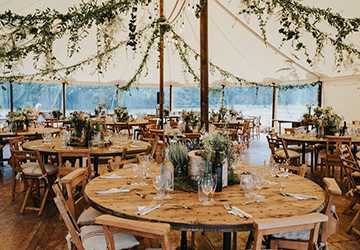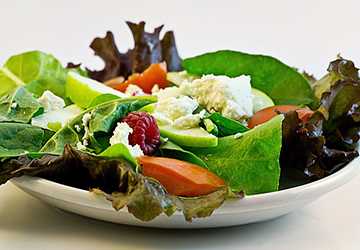How to plan a sustainable wedding: tips and tricks
Author: sannan
Many couples dream of a day filled with love, joy, and beauty when planning a wedding. But in today's world, it's increasingly important to think beyond aesthetics and consider the environmental impact of such events. This is where sustainable weddings come in, allowing couples to celebrate their special day while minimizing their carbon footprint. We have a comprehensive guide if you want to go green with your wedding planning. In this article, we'll discuss how to plan a sustainable wedding using a variety of tips and tricks to reduce your environmental footprint and make your special day memorable for all the right reasons.

Choose a green venue.
Choosing the right venue is a critical first step in planning a sustainable wedding. By choosing an eco-friendly venue, you can significantly reduce the environmental impact of your celebration. Look for locations that incorporate environmentally friendly practices, such as energy-efficient lighting, renewable energy, and waste reduction programs. Many venues, especially those in scenic natural settings, are committed to protecting the environment. Hosting a wedding in a park, garden, or beach highlights the natural beauty of the event and promotes a commitment to sustainability. When choosing an eco-friendly venue, you support a business that aligns with your eco-conscious values.
Waste reduction and recycling stations
Having a waste reduction and recycling station at your wedding venue is a proactive move that will minimize the environmental impact of your celebrations. Provide guests with labelled containers for proper disposal of their waste. These include recycling bins for glass, plastic and paper and compost bins for food scraps and biodegradable items. By making it easier for your guests to recycle and compost, you can prevent much waste from going into landfills. Work with your venue and catering teams to manage these waste streams.
Sustainable transportation
Encourage your guests to use sustainable modes of transportation. If possible, choose a venue easily accessible by public transportation or provide a shuttle service to reduce the number of individual vehicles arriving at the venue. Consider setting up a carpool or carpooling program so guests can travel to the venue together. If your ceremony and reception are held at different locations, plan the event to minimize travel time between the two. Sustainable transportation options can reduce your wedding's carbon footprint and make guests feel more comfortable. Incorporating these additional tips into your wedding planning will further increase the sustainability of your celebration and help create a greener, more environmentally conscious event. Your efforts to minimize waste, encourage recycling and promote sustainable transportation options will make your wedding a shining example of environmental stewardship.
Choose invitations carefully
Wedding invitations are essential to the planning process and provide significant opportunities to reduce waste and promote sustainability. Choose digital invitations or send printed invitations made from recycled or sustainably sourced paper. Invitation designs can include eco-friendly elements such as minimal or vegetable-based inks and avoid plastic coatings. Additionally, consider creating a wedding website where guests can find all necessary information, including RSVP options and accommodation details. Not only does this reduce paper waste, but it also simplifies the planning process. If you must use traditional paper invitations, keep them as souvenirs or donate them for recycling after the event.

Sustainable decor and flowers
Sustainable décor and flowers are visually appealing and help create a green wedding. Choose reusable or recycled decorative items to reduce waste. You can also rent items such as tablecloths, centerpieces, and arches to minimize environmental impact. If you decide to purchase decorations, consider using items that can be used for other purposes or given to other couples at the wedding. When it comes to flowers, choose local, seasonal flowers. Local flowers support local growers and have a lower carbon footprint due to less transportation. Additionally, consider using potted plants or succulents as table centerpieces as wedding favors for guests to take home and care for. Avoid non-biodegradable floral foam and use natural, reusable materials for bouquet packaging.
Sustainable food and drink options
The food and drinks you serve at your wedding can significantly impact the environment. Choose local, organic, and seasonal ingredients for your menu—partner with caterers who value sustainability and offer a farm-to-table experience. Reducing meat and dairy from your diet can also help reduce your carbon footprint. Vegetarian and vegan options are environmentally friendly and cater to various dietary preferences. For drinks, consider offering locally brewed beer and wine. Use glassware instead of disposable cups and avoid single-use plastic straws. If you choose disposable tableware, choose compostable or biodegradable options. This option minimizes waste and contributes to a more sustainable celebration.
Eco-Friendly Offers and Registration
Wedding gifts are a great way to show appreciation to your guests, but they often end up being a waste. Consider eco-friendly wedding favors that serve a dual purpose, such as saplings, seed packets or reusable totes. These not only leave lasting memories but also promote sustainable development. Or donate to an environmental or charitable organization for your guests. When setting up your wedding registry, consider sustainable, long-lasting, and eco-friendly items. Choose products made from recycled materials, energy-saving appliances, or experiences over material possessions. Please encourage your guests to follow your lead and make sustainable choices in their daily lives.
Energy-efficient lighting and decoration
Choose energy-efficient lighting and decor options to reduce your wedding's electricity consumption. For example, LED lights use much less energy than traditional light bulbs and can create a beautiful ambience. Use as much natural light as possible, especially for daytime weddings, to minimize the need for artificial lighting. Use solar or battery-powered lighting for outdoor weddings to illuminate walkways, pathways, and outdoor seating areas. Consider flameless LED candles for table centerpieces and decorative purposes, which reduce the risk of fire and are reusable. Choosing energy-efficient lighting and decorations will reduce your carbon footprint and create an eco-friendly and romantic atmosphere for your celebration.
Conclusion
Planning a sustainable wedding is not only environmentally conscious but also highlights the beauty and uniqueness of your special day. By choosing an eco-friendly venue, sending digital invitations, using sustainable décor and attire, and making wise choices in all aspects of your wedding, you can minimize your environmental impact and inspire others to do the same. With these tips and tricks, you can create a wedding that's not only memorable but also a positive force for creating a better, more sustainable world. So, let love and sustainability go hand in hand and embark on this beautiful journey together.







